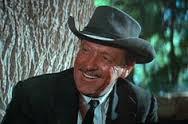Supporting Characters in Your Real Life
Remember when Michael Jordan got into trouble for referring to his teammates on the Chicago Bulls as “my supporting cast?”

William Holden in “The Wild Bunch”
He was, of course, only telling the truth. (Though Scotty Pippen, we must admit, has a right to be a little miffed.)
But back to you and me and our novels based on our real lives. What about our spouses and kids and bosses and friends and the other crazy characters we’re going to write about? They may not like to think of themselves this way, but ..
They are supporting characters in our story.
Putting their egos aside, the question becomes
How do we as writers portray these individuals?
Are we free to change them? Can we put dialogue into their mouths that the real-life personalities never said or would never say? Can we have them do things that they didn’t do or wouldn’t do in real life?
Yes, yes, and yes.
We said in an earlier post that you and I, crafting a fictional version of our real-life story, have to detach ourselves emotionally from our real selves (if we ourselves are the hero of the story we’re telling). We need to step back and gain perspective. We must be able to see our real-life self coolly and objectively, the way a stranger would see him or her. Then and only then can we write that character on the page.
Same for supporting characters.
Your mother Joann, as soon as you start to write about her, has ceased to be Joann. She is now “Joann.” Your feckless ex-husband Dwayne has now become “Dwayne.” (Or whatever name you choose to call him.)
Let’s return for a moment to my favorite subject: theme.
Flashing back to our basic principles of storytelling, we recall that
The protagonist embodies the theme.
And that principle’s corollary:
Every supporting character represents an aspect of the theme.
(By the way, this same principle applies not just to characters, but to animals, to inanimate objects, to Jack Nicholson’s sliced-up nose in Chinatown, and to William Holden’s six-gun in The Wild Bunch. None of these exists only as itself. Each represents an aspect of the theme.)
In The Knowledge, my cat Teaspoon (the fictional version of my real-life cat Mo) represented my character’s Muse. In other words, an aspect of the theme.
In The Knowledge, the city of New York represented the greater creative life, both internal and external, that I (my character, Stretch) was trying to learn to navigate. So did the city of London.
The fictional Nicolette represented a realized artist. She was the ideal that Stretch was trying to achieve. Again, an aspect of the theme.
The fictional Peter represented an artist who went too far into the potential insanity of the creative process. His fate stood for the dark side of this enterprise. Like Jimi Hendrix or Janis Joplin, he represented the fear Stretch had for his own future.
What about the real people upon whom these characters were based? Were they exactly as The Knowledge portrayed them?
No.
The real woman upon whom Nicolette was based was a true, realized artist. But she never read me the Riot Act like she did in Chapter 32 in The Knowledge. Her diatribe in that chapter is a straight-up recital of the book’s theme. I, the writer, put those words into “Nicolette’s” mouth.
This is exactly what you have to do with your mom Joann and your ex-husband Dwayne.
What does “Joann” represent in your story? What aspect of the theme does “Dwayne” stand for? Should there be a scene where “Joann” dumps a platter of steaming spaghetti down the front of “Dwayne’s” trousers? Should “Dwayne” dive into the frigid waters of Sheepshead Bay to save “Joann” when she spills off the stern of your second husband’s fishing boat?
Yes, if the scenes mean something to the story. Yes, if they are on-theme. Yes, if what Joann represents and what Dwayne represents come together in that way as part of your story.
This is how a writer thinks.
This is how a writer structures a story.
The real Joann may be pissed off (or she may be delighted) by the Pasta Scene or the Sheepshead Bay Rescue. But that should be no concern to you, the writer. And it certainly won’t mean a thing to the reader.
You are telling a story about “yourself” and “Joann” and “Dwayne” and all the other nutty inhabitants of your own nutty life. Your fidelity is to that story—and to the fortunate strangers who will read it.
The real Joann and the real Dwayne? They’ll just have to get over it.
 newest »
newest »
 Hey Steven - it's time for you to write a Vietnam story. Jarheads need your story-telling power
Hey Steven - it's time for you to write a Vietnam story. Jarheads need your story-telling power



